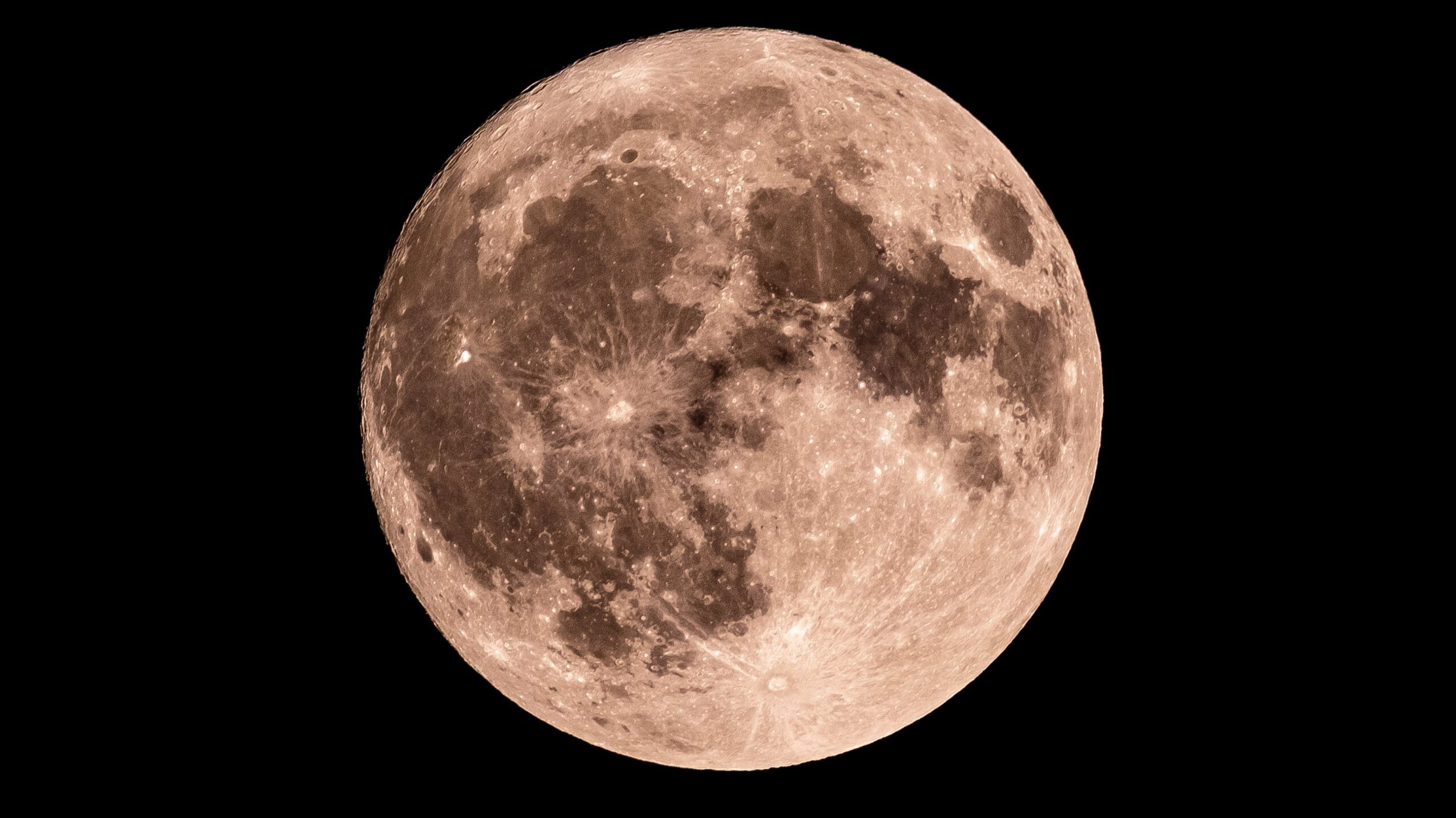Science
Full Moon Approaches: Discover the Waxing Gibbous Phase Tonight

The night sky will showcase a stunning Waxing Gibbous moon on September 6, 2025, with approximately 98% of its surface illuminated. According to NASA, this phase occurs as the Moon moves towards its full state, which will take place on the following day, September 7.
As the Moon orbits Earth, the Sun illuminates different portions of its surface, creating a sequence of eight distinct phases over a 29.5-day cycle. Tonight, observers will find the Moon particularly bright and easy to spot, providing an excellent opportunity for both casual viewers and astronomy enthusiasts alike.
Exploring the Moon’s Surface
With the naked eye, stargazers can identify several lunar features, including the Mare Imbrium, Mare Vaporum, and Mare Fecunditatis. Using binoculars enhances the experience, allowing viewers to see the Grimaldi Basin and the Gassendi Crater. For those equipped with telescopes, the night promises remarkable views of the Apollo 14 and Apollo 17 landing sites, along with the impressive Rupes Altai.
Understanding the various moon phases can deepen appreciation for these celestial events. As the Moon progresses through its cycle, the angles between the Sun, Moon, and Earth shift, altering how much of the Moon’s surface is visible from our perspective.
What Are Moon Phases?
Moon phases are classified into eight main categories, each representing a distinct stage in its orbit. They include:
– **New Moon**: The Moon is positioned between Earth and the Sun, rendering it invisible.
– **Waxing Crescent**: A small sliver of light emerges on the right side.
– **First Quarter**: Half of the Moon is illuminated on the right side.
– **Waxing Gibbous**: More than half is lit, approaching a full moon.
– **Full Moon**: The entire face of the Moon is illuminated.
– **Waning Gibbous**: The light begins to decrease on the right side.
– **Last Quarter (or Third Quarter)**: The left side is now illuminated.
– **Waning Crescent**: A thin sliver remains on the left before it disappears.
The upcoming full moon on September 7 follows a previous full moon that occurred on August 9. This cycle emphasizes the Moon’s consistent and predictable nature, allowing for ongoing observation and appreciation of its beauty.
For those interested in astronomy or simply looking to enjoy the night sky, the Waxing Gibbous phase offers an ideal opportunity to engage with our nearest celestial neighbor.
-

 Lifestyle3 months ago
Lifestyle3 months agoLibraries Challenge Rising E-Book Costs Amid Growing Demand
-

 Sports3 months ago
Sports3 months agoTyreek Hill Responds to Tua Tagovailoa’s Comments on Team Dynamics
-

 Sports3 months ago
Sports3 months agoLiverpool Secures Agreement to Sign Young Striker Will Wright
-

 Lifestyle3 months ago
Lifestyle3 months agoSave Your Split Tomatoes: Expert Tips for Gardeners
-

 Lifestyle3 months ago
Lifestyle3 months agoPrincess Beatrice’s Daughter Athena Joins Siblings at London Parade
-

 World3 months ago
World3 months agoWinter Storms Lash New South Wales with Snow, Flood Risks
-

 Science3 months ago
Science3 months agoTrump Administration Moves to Repeal Key Climate Regulation
-

 Science2 months ago
Science2 months agoSan Francisco Hosts Unique Contest to Identify “Performative Males”
-

 Business3 months ago
Business3 months agoSoFi Technologies Shares Slip 2% Following Insider Stock Sale
-

 Science3 months ago
Science3 months agoNew Tool Reveals Link Between Horse Coat Condition and Parasites
-

 Sports3 months ago
Sports3 months agoElon Musk Sculpture Travels From Utah to Yosemite National Park
-

 Science3 months ago
Science3 months agoNew Study Confirms Humans Transported Stonehenge Bluestones









